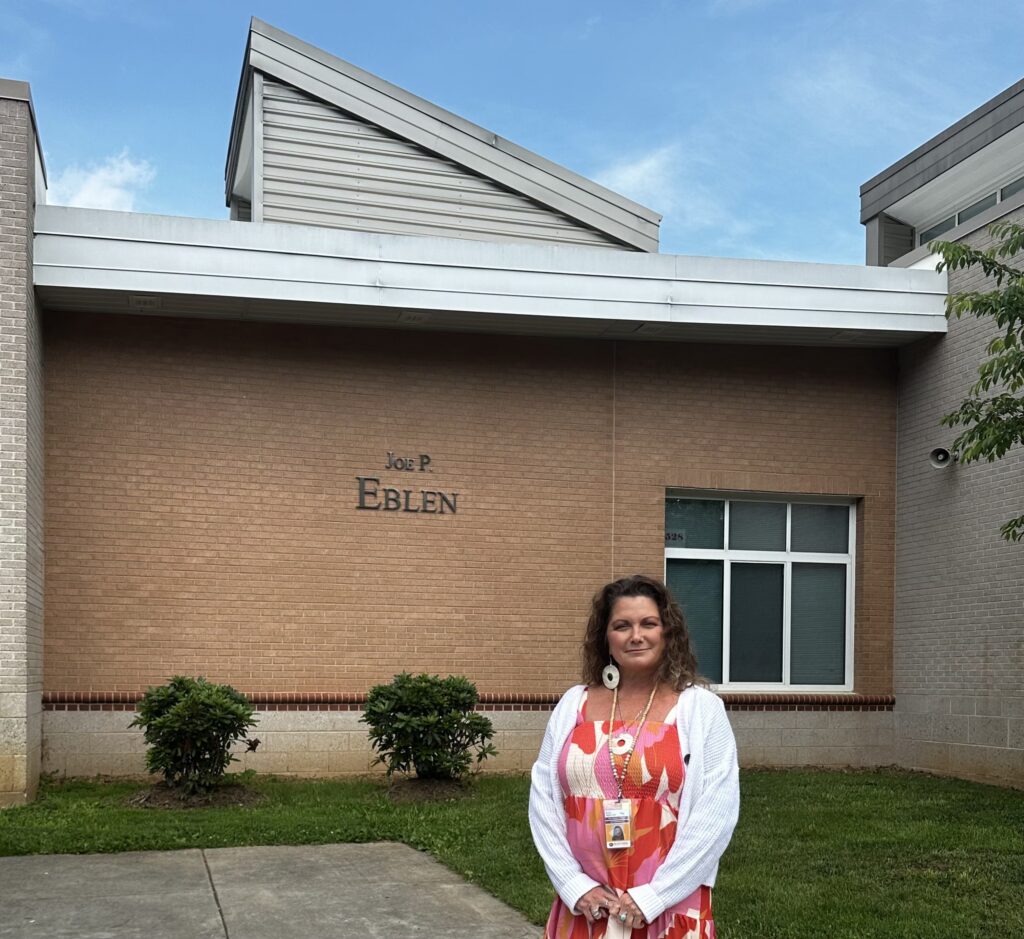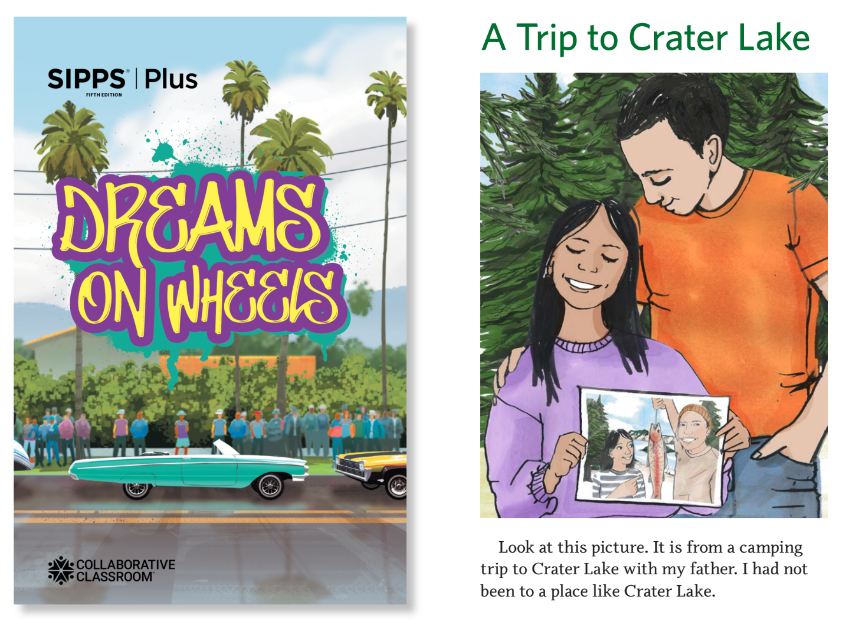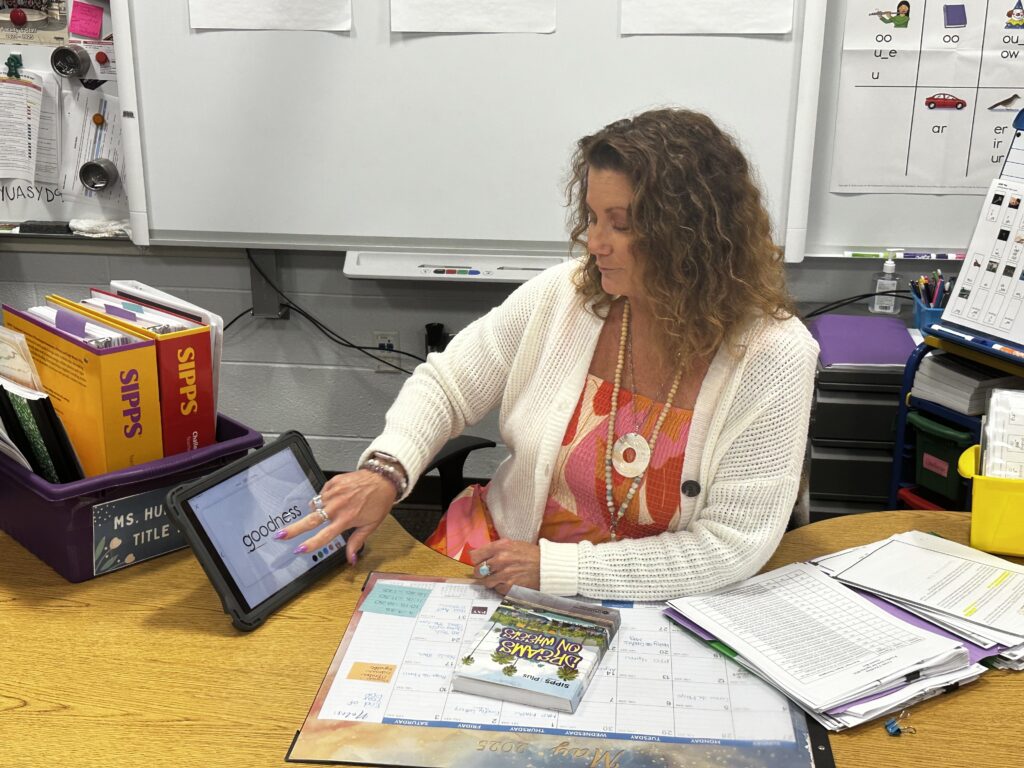
Pamela Hunter is a Title 1 Reading Specialist at Joe P. Eblen Intermediate School. A graduate of Radford University and Old Dominion University, she taught for 30 years in Virginia before moving to Buncombe County in 2022 to start the next chapter of her teaching career. Pamela uses SIPPS to deliver high-quality, structured literacy instruction to her older readers.
Tell us a bit about yourself.
After more than three decades in education across Virginia and North Carolina, I’ve seen a lot of programs come and go, but few have had the staying power or impact of SIPPS. I currently serve at Eblen Intermediate School in Buncombe County, NC, working with fifth and sixth graders who sit right at the crossroads between elementary and middle school. These students need instruction that respects their age and maturity, yet still supports their developing literacy skills. SIPPS has given us the tools to meet that challenge.
How did you find SIPPS?
My first experience with SIPPS was in Virginia, where I witnessed its power in the elementary setting. The placement assessments, mastery checks, and systematic structure within a walk-to-read model made a noticeable difference.
But it wasn’t until I attended the North Carolina Reading Association Conference in Spring 2024 that I realized SIPPS could be just as transformative for older readers. During a session led by Katharine Bonasera I immediately recognized the SIPPS materials, specifically the Dreams on Wheels text, and got excited. Finally, here was a tool tailored to the unique needs of intermediate students.

Why did SIPPS seem like the right fit?
As we searched the conference for resources geared toward older students, we weren’t particularly hopeful. Most materials are still heavily geared toward early elementary grades. But intermediate students, especially those in grades 5 and 6, present unique challenges:
- They need age-appropriate, engaging content that still provides foundational skill support.
- The pacing must be just right: fast enough to stay engaging but thoughtful enough to build skills.
- Emotionally, these students straddle the line between needing nurturing support and craving independence.
The 2024–2025 school year brought additional hurdles, including the impact of Hurricane Helene. Our community, already facing challenges and a high population of multilingual learners, had even more needs. That’s when I reached out to Katharine to see if we might give SIPPS a try with our students. The need was more urgent than ever.
How is SIPPS helping you address the challenges you face?
One of the cornerstones of my teaching philosophy is getting to know students not just as readers, but as people. Everyone has a story, and unless I understand that story, I can’t fully help them grow. I’ve been fortunate to learn from leaders who modeled this approach, and SIPPS gives me tools that align with that mindset.
SIPPS, and particularly the Dreams on Wheels text, has helped us navigate the challenges of intermediate instruction. Here’s how:
- Engaging Texts: Longer, content-rich passages with a good mix of fiction and nonfiction. Students begin connecting topics across texts and developing background knowledge.
- Empowering Educators: With clearly structured lessons, my teacher assistant Alycia has grown tremendously. She’s planning, reflecting, and confidently delivering quality instruction.
- Efficient Planning: SIPPS routines are streamlined, especially with tools like the Card Deck app. This frees up time to focus on students instead of planning logistics.
- Ongoing Assessment: The guided spelling routines and lesson applications allow us to check for understanding daily.
Even with limited planning time, SIPPS provides everything needed to deliver high-quality, structured literacy instruction.

What initial impacts are you seeing with students?
The impact on our students has been powerful:
- They’re decoding multisyllabic words.
- They apply knowledge of sight syllables and word meanings to vocabulary like microscope, colonial, and planetary.
- Confidence and curiosity about words are rising.
- They’re examining entire words, including suffixes, which wasn’t happening before.
- Engagement is up and students now understand nuanced concepts like the schwa through consistent practice.
Most impressively, 95% of our students who began in the SIPPS Plus level have now advanced to the Challenge level.
What’s next for your implementation?
We’re excited to begin the next school year with SIPPS from day one. Our goals include:
- Bringing more colleagues into the fold
- Prioritizing fluency instruction
- Expanding SIPPS across our district
What advice do you have for others looking to support older striving readers?
If your district is looking for ways to support older struggling readers, here’s what I’d suggest:
- Trust the process. It may feel slow at first, especially in the early lessons, but stay the course. Around Lesson 20, you and your students will hit your stride.
- Use the materials. The Vocabulary Supplement, for example, can elevate Challenge level instruction.
- Don’t skip assessments. Mastery and progress checks are essential for tracking effectiveness and making informed instructional decisions.
SIPPS isn’t just another program, it’s been a game-changer for intermediate striving readers in Buncombe County. We’re thrilled to see what more is possible in the 2025–2026 school year.
Related Reading:
How Age-Appropriate Texts Help Older Striving Readers Succeed
Helping Striving Readers in High School: Five Elements for Success
Spotting Reading Difficulties: Early Indicators for Middle and High School Educators
Get SIPPS Samples
SIPPS for Older Readers Digital Sample Kit includes Scope and Sequence, Placement Assessment, Sample Lessons, and more
